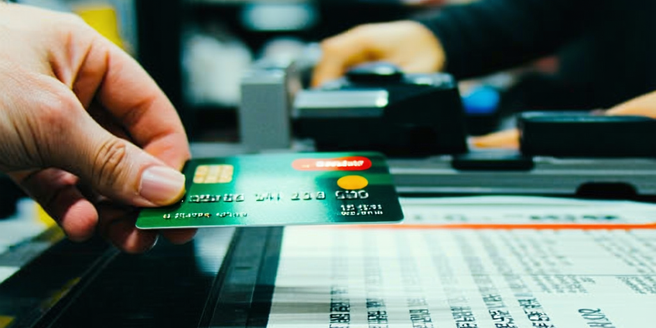Understanding Secured Credit Cards
| Feature | Description | Impact on Credit |
| Deposit Required | You must provide a cash deposit to secure your credit line. | Establishes credit limit and reduces lender risk. |
| Credit Limit | Usually equal to your deposit amount. | Helps manage spending and builds credit with responsible use. |
| Credit Reporting | Activity reported to credit bureaus. | Improves credit score with timely payments. |
| Interest Rates | Can be higher compared to unsecured cards. | Affects total cost if balance not paid in full. |
| Transition | Option to upgrade to unsecured cards over time. | Opens access to better credit products. |
| Fees | May include annual or application fees. | Increases overall costs of card ownership. |
Benefits of Secured Credit Cards
Secured credit cards offer numerous benefits for individuals looking to establish or rebuild their credit profiles. One of their primary advantages is the ability to report responsible usage to major credit bureaus, which can aid in improving low credit scores. Unlike prepaid cards, secured credit cards give users a real opportunity to demonstrate responsible credit behavior. Additionally, they require only a security deposit, providing access to a line of credit without the need for an extensive credit history. This can be particularly beneficial for young adults or those with past financial difficulties. Over time, with regular payments and proper card usage, cardholders may transition to unsecured credit lines. Furthermore, many secured cards offer similar features as traditional credit cards, including purchase protection and fraud alerts, making them a valuable tool not only for credit building but also for secure financial transactions.
How Secured Cards Help Build Credit
Secured credit cards are designed to help individuals establish or rebuild their credit history. Their primary mechanism is through the regular reporting of activity to the credit bureaus—this includes details about payment history and credit utilization. By making on-time payments and maintaining low balances, cardholders demonstrate responsible credit behavior, which is reflected in their credit scores. Moreover, secured cards provide a manageable step towards building a robust credit profile because the credit limit is generally capped at the amount deposited. This reduces the chance of accruing high levels of debt that can harm credit ratings. Additionally, over time, as positive account history is established, users may be granted the opportunity to graduate to an unsecured credit card, thus granting them access to higher credit limits and potentially more favorable terms. As such, secured cards serve as a foundation upon which individuals can construct a stronger credit future.
Choosing the Right Secured Card
Selecting the right secured credit card is pivotal to effectively building your credit. The first factor to consider is the card’s fees and interest rates, as these can accrue costs even with small balances. It’s advisable to look for a card with a low annual fee and reasonable interest rate. Additionally, the minimum deposit required can vary significantly, so choose an amount that aligns with your budget. Another key consideration is whether the card reports to all three major credit bureaus, as this will ensure your positive payment history is accurately reflected in your credit score. Some secured cards offer perks similar to unsecured cards, such as cash back or fraud protection, which can add further value. Lastly, consider the issuer’s policy on transitioning to an unsecured card, as this can provide an essential progression as your credit score improves. By evaluating these aspects, you can choose a secured card that meets both your financial and credit-building needs.
Setting Up Your Secured Card
Setting up your secured card effectively lays the groundwork for future credit success. The setup process typically begins with applying through a card issuer that offers secured cards. You’ll need to provide personal information and accept the terms, which usually include a security deposit that will determine your credit limit. Once approved, ensure that you understand all the card’s terms and conditions, including fees, interest rates, and billing cycles. Setting reminders for your payment due dates is crucial to avoid late fees and to ensure timely payments, which positively impacts your credit score. Furthermore, careful monitoring of your expenses and maintaining a low credit utilization ratio—preferably under 30% of your credit limit—can reinforce responsible card usage. As you proceed with your daily transactions using the card, keep track of your balance to avoid overspending. Successfully setting up and managing your secured card can serve as a stepping stone to stronger financial habits.
Using Your Secured Card Responsibly
Responsible use of a secured credit card is fundamental to achieving your credit-building goals. Begin by ensuring your security deposit is sufficient, as this sets your initial credit limit. Use your card for small, manageable purchases that you can pay off in full each month—this practice helps in demonstrating your ability to responsibly manage credit. Keeping your credit utilization low is crucial, with experts recommending that you keep it below 30% of your total credit limit. Regularly checking your account statements and keeping an eye out for any unauthorized transactions can prevent fraud and maintain the health of your account. Avoid taking cash advances or making late payments, as these can incur high fees and impact your credit score negatively. Setting up automatic payments from your bank account can help ensure timely bill settlement. By maintaining disciplined use of your secured credit card, you create a positive payment history that serves as a cornerstone in building a solid credit profile.
Monitoring Your Credit Score
Regularly monitoring your credit score is an essential part of building and maintaining a healthy credit profile when using a secured card. It’s important to frequently review your credit reports from the three major credit bureaus—Equifax, Experian, and TransUnion—as errors or discrepancies can harm your credit score. Utilizing free or paid credit monitoring services can keep you informed of changes or suspicious activity, allowing for quick dispute of inaccuracies. Understanding the factors influencing your score, such as payment history, credit utilization, and new credit inquiries, empowers you to make informed financial decisions. Over time, consistently paying your card balances and minimizing debt will positively impact your credit score, giving you more leverage in negotiations for high-value loans or credit cards. Remember that building credit is a long-term commitment, and diligent monitoring is key to avoiding negative surprises and ensuring steady credit growth.
When to Transition to Unsecured Cards
Transitioning from a secured credit card to an unsecured one is a major milestone in your credit-building journey. Timing is key when making this move. Ideally, you should have established a consistent track record of on-time payments and maintained a low credit utilization rate for at least one year. You’ll need to review your credit score to ensure significant improvement since opening a secured card, indicating that you are a reliable borrower. Once you meet these criteria, reach out to your card issuer to understand their policy on upgrading to an unsecured card. This transition is beneficial as unsecured cards typically offer lower fees, higher credit limits, and more rewarding perks and features. However, ensure you meet the standard credit requirements before applying for new cards to avoid unnecessary hard inquiries that could temporarily affect your score. Monitoring when you’re ready and making the transition will enhance your credit flexibility.
Common Mistakes to Avoid
When using a secured credit card to build credit, it is important to avoid some common mistakes that could hinder your progress. One frequent error is forgetting to make your monthly payments on time. Late payments can incur hefty fees and significantly impact your credit score negatively. Additionally, avoid maxing out your credit limit, as high credit utilization can demonstrate poor credit management and adversely affect your score. Making only minimum payments each month can also trap you in debt due to possibly high interest rates; aim to pay the full balance to avert interest accumulation. Another mistake is repeatedly applying for new lines of credit within short periods, which can lead to multiple hard inquiries, thus lowering your credit score. Finally, failing to regularly review your credit report can result in overlooked errors that skew your credit profile. Staying aware of these pitfalls and managing your card effectively paves the way for successful credit building.
Additional Tips for Building Credit
Building your credit doesn’t stop with using secured cards; there are additional strategies you can employ to bolster your credit portfolio. First, consider setting up automatic payments for bills, which can prevent late payments and develop a positive payment history. Increasing your credit limit, either by depositing more into your secured card or by requesting a higher limit from issuers, can lower your credit utilization ratio, positively influencing your credit score. It’s also important to keep old accounts open to build a long credit history—closing accounts can reduce your available credit and harm your score. Diversifying your credit by incorporating different types of credit, like installment loans or retail cards, showcases your ability to manage various credit responsibilities. Lastly, prioritize paying off debt rather than shifting balances between accounts, as this improves your debt-to-income ratio and reflects responsible borrowing behavior. Employing these methods, alongside your secured card, aids in constructing a more robust credit profile.



